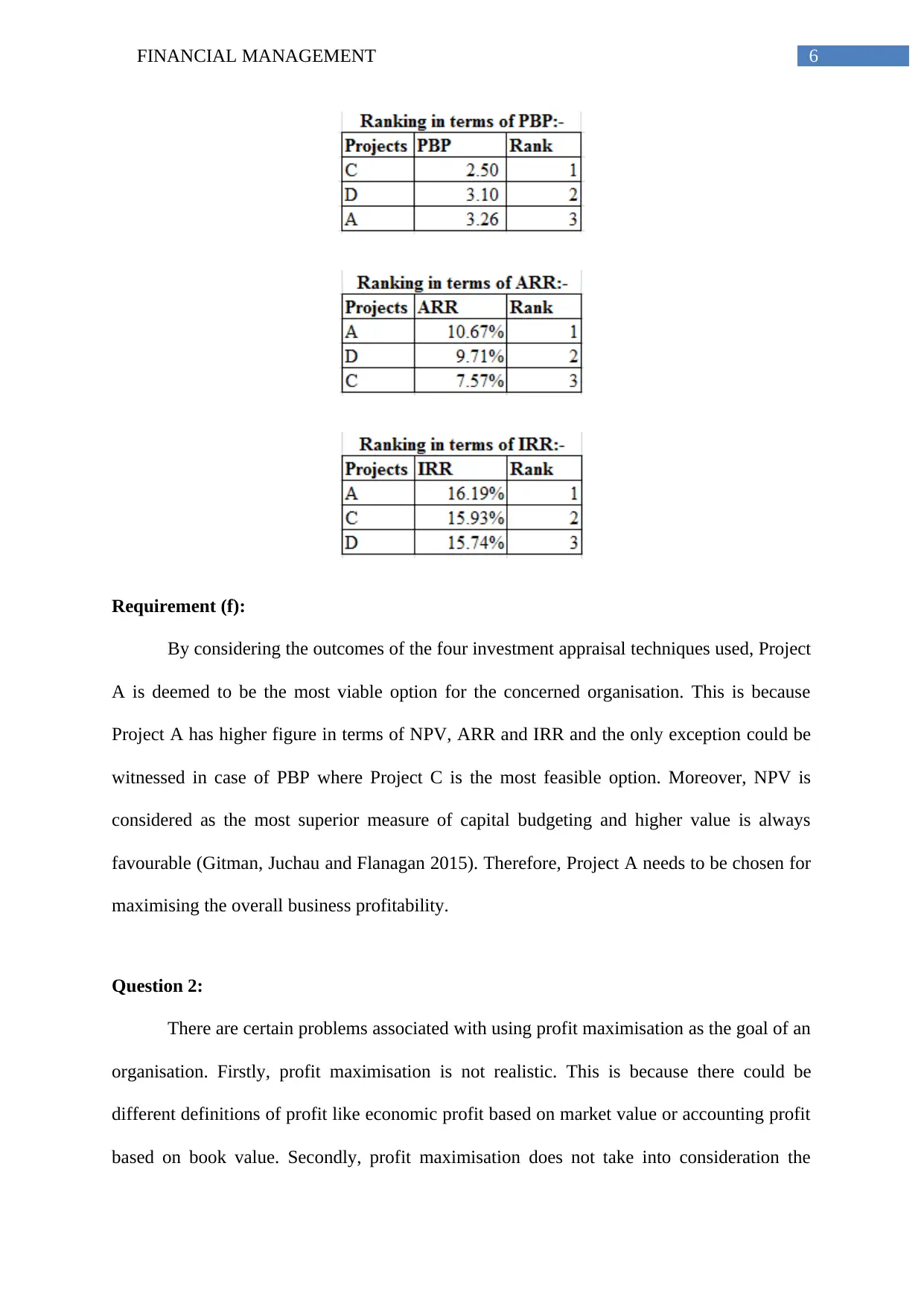Financial Management: NPV, ARR, and the Goal of Wealth Maximization
VerifiedAdded on 2023/04/17
|9
|573
|349
Report
AI Summary
This financial management report evaluates various investment appraisal techniques, including Net Present Value (NPV), Accounting Rate of Return (ARR), and Internal Rate of Return (IRR), to determine the most viable investment project for an organization. Project A is identified as the most favorable option due to its higher NPV, ARR, and IRR, aligning with the superior measure of capital budgeting for maximizing business profitability. The report also addresses the limitations of profit maximization as an organizational goal, highlighting its unrealistic nature, disregard for the time value of money, and failure to account for risk variations. Shareholder wealth maximization is presented as a more effective alternative, focusing on increasing the organization's value to its owners by considering future cash flows, timing, and risk factors, ultimately driving up the stock price in the market. Desklib provides access to this and other solved assignments for students.
1 out of 9
















![[object Object]](/_next/static/media/star-bottom.7253800d.svg)